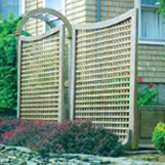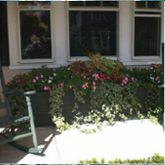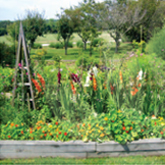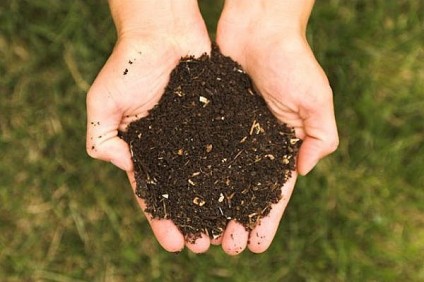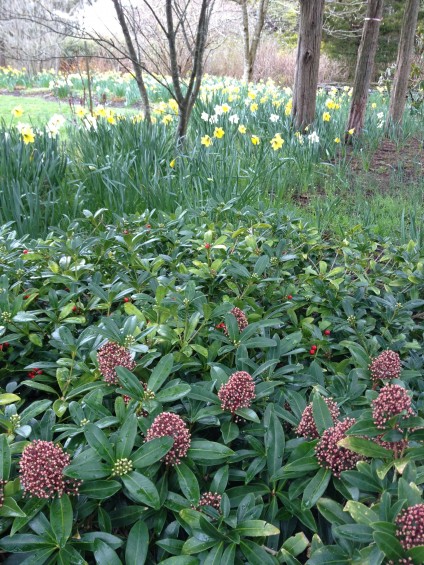Dear Mother Nature,
I’m very sorry for how I have been speaking about you lately. I’ve said some harsh things about the constant snow, frigid temperatures and the delay of any spring like weather. Maybe I haven’t been seeing the big picture. All the adult winter moths are gone! Other pests and diseases took a good hit so hopefully there will be less to contend with for a while. The plants had a nice snow blanketed sleep and are looking all the better for it as they emerge from dormancy.
Also, I can’t complain about the consistent moisture all winter so we don’t have to worry about a drought at the moment. Trees have had a rough time with all the heavy snow and broken branches but we have to cull to open up the canopy for light to reach the forest floor and new life to thrive. Also the boon of firewood for clambakes this summer and next winter’s fireplace is great as well.
I think the hardest thing for me is the lack of color. It is so stark and empty with browns and greys all around. Although, the crisp blinding white of snow cover and ice outlining every twig does make me see the bones of the garden without distraction. The clean pallet of piercing blue or steel grey sky and brown and grey earth make me see where evergreen or punches of color are needed. When I do see color it is like a miracle. Some great gift that I have to capture on my camera and share as fast as I can to show others what I’ve found.
Sound has been lacking as well. For a while there was the racket of chain saws and the drone of generators but I mean those sounds that only happen in the spring. Red winged blackbirds, spring songs of chickadees and the best of course are the peepers and frogs. My boys are so tired of me stopping the car and silencing them or leading them down to the wet in the far field to listen. I can’t get enough.
I do thank you for letting me see my world differently for a while, letting me feel the cold to yearn for warmth, to empty the garden of all work and color to appreciate it when it has returned.
I give in. I guess that you do know what’s best.
Your faithful servant
P.S. That afternoon on the couch with the Downton Abbey marathon wasn’t so bad either! THX!
Cheers!
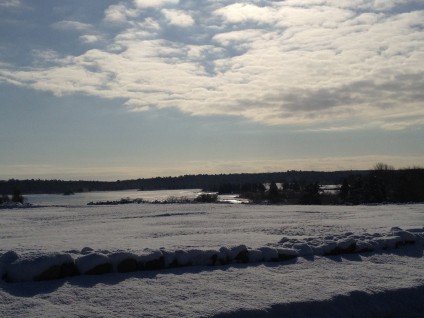
Stark beauty of winter


